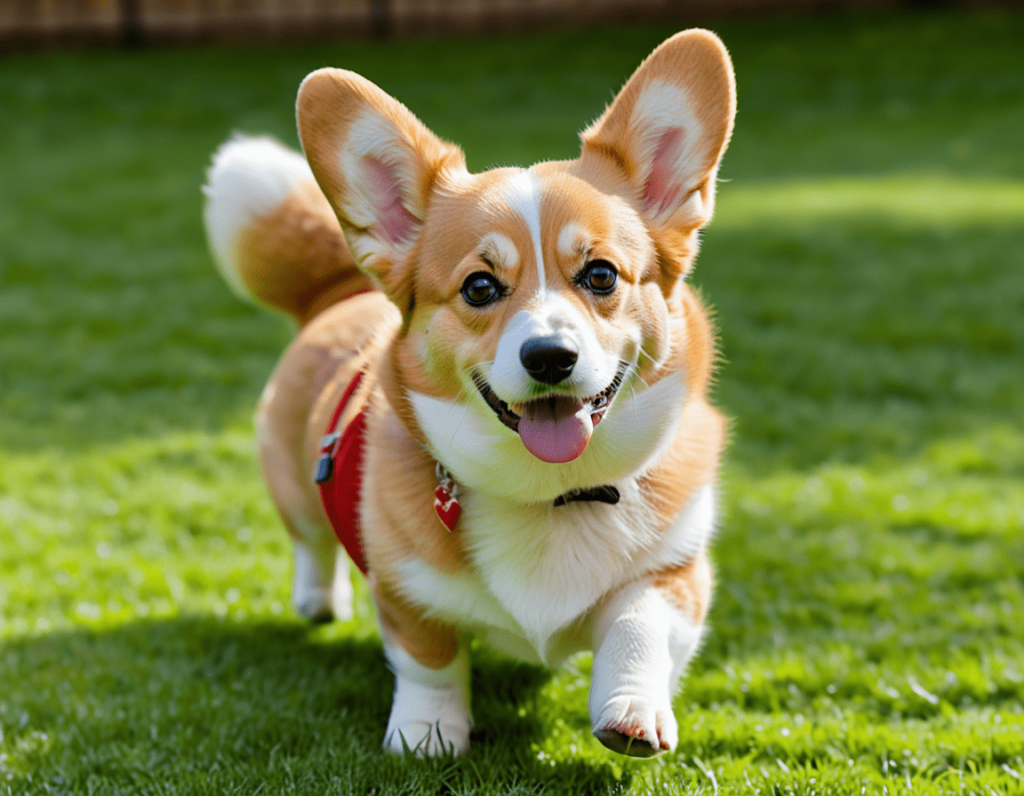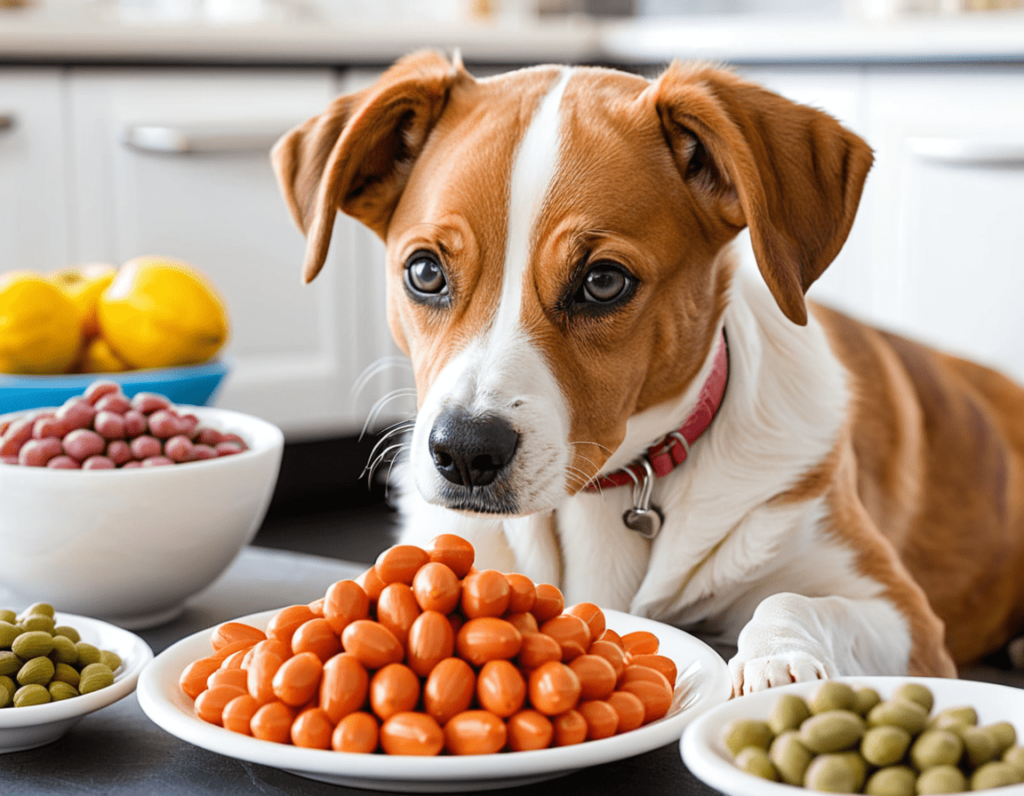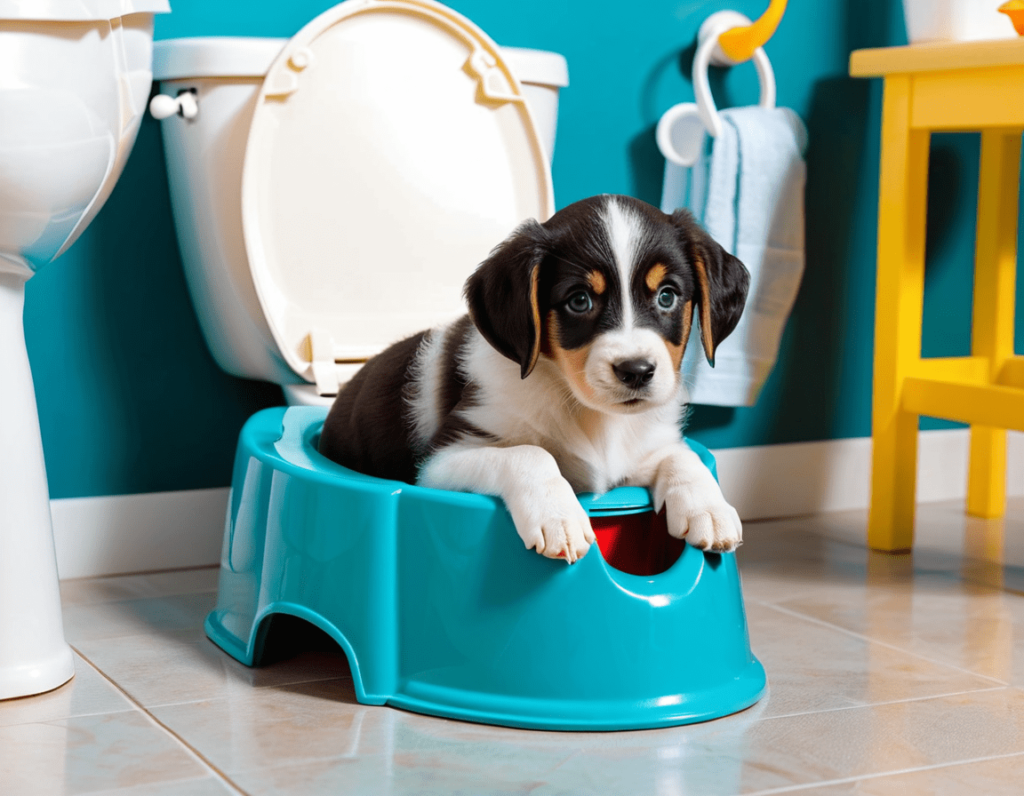
Got a new puppy in the house? Congratulations! You’ve just signed up for endless cuddles, chewed-up shoes, and, yes, a crash course in potty training. Potty training is a rite of passage for every dog owner, and while it may seem like a big challenge, you can absolutely get your little fluffball house-trained in no time. Let’s dive into the tips, tricks, and, yes, a few laughs that will help you become a potty training pro.
Step 1: Set a Routine (Because Puppies Love Routine!)
One of the biggest secrets to successful potty training is a good routine. Puppies thrive on consistency, so setting up a schedule will make potty training much easier. Here’s a sample routine to get you started:
- First Thing in the Morning: As soon as your puppy wakes up, it’s time to go outside. No lounging around for you either – puppies need to go, and they need to go now.
- After Meals and Playtime: Digestion in puppies is quick, and they usually need to go right after eating. Playtime also stirs things up, so keep an eye on them after a game of fetch.
- Before Bedtime: Taking your puppy out before bed can prevent any midnight surprises.
A good rule of thumb? Puppies can generally “hold it” for about one hour for every month of age. So, a three-month-old puppy can hold it for roughly three hours, though this isn’t set in stone.
Step 2: Choose a “Potty Spot” and Stick to It
Puppies get easily confused, so having a designated potty spot will help reinforce where they’re supposed to go. Take them to the same place each time, and let them sniff around. Eventually, they’ll start associating that spot with doing their business.
Pro Tip: Praise, praise, praise! When your puppy does their business in the right spot, celebrate like they just won an award. Dogs love positive reinforcement, and they’ll quickly pick up that going in the right place makes you very happy.
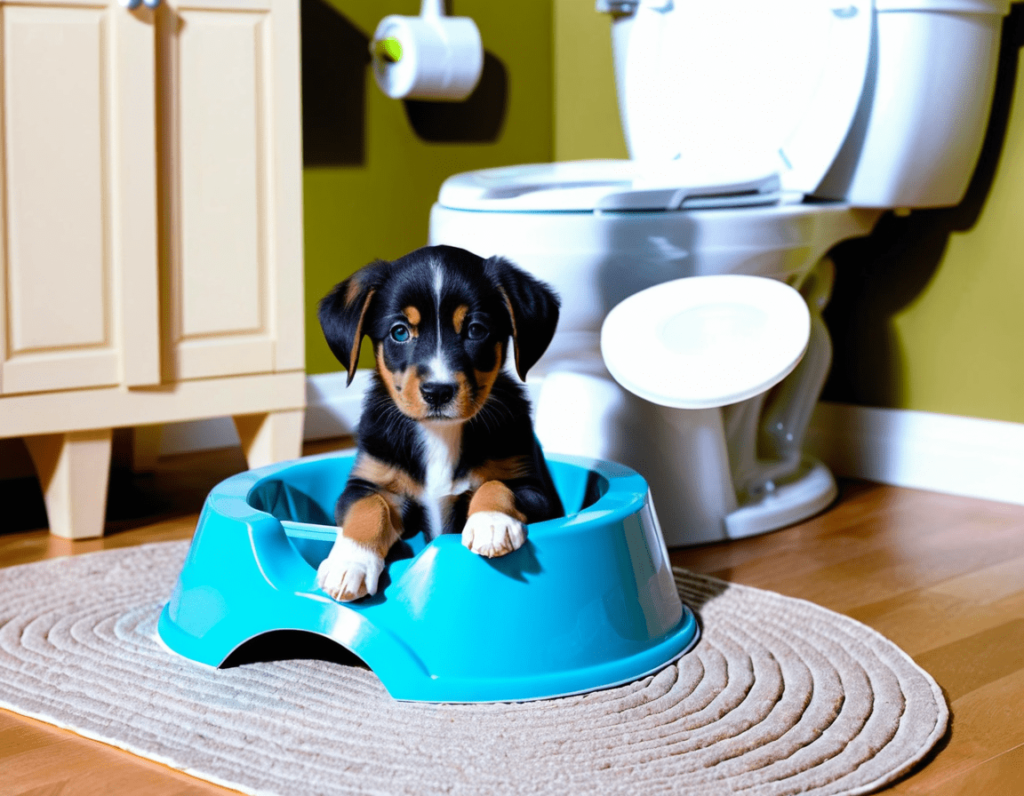
Step 3: Use a Crate It’s Not “Mean,” It’s Practical!
Crate training is an incredibly helpful tool for potty training. Many dogs actually see their crate as a safe, cozy space, and since they don’t like to soil their “den,” it encourages them to hold it until they’re outside.
Start by introducing your puppy to the crate in a positive way, letting them explore it at their own pace. The crate should be just big enough for them to stand, turn around, and lie down comfortably. If it’s too large, they might decide to use one corner as their bathroom. And remember, the crate is only meant to be used for short periods, especially with young puppies.
Funny Note: Some puppies will take to the crate right away, while others will give you the “Are you serious?” look. Just remember, persistence pays off!
Step 4: Watch for Signs—Your Puppy Will Tell You When It’s Time!
Puppies aren’t subtle when they need to go. Watch for signs like sniffing the floor, circling, whining, or heading toward the door. Once you notice these signs, scoop them up quickly and get them outside. This is the perfect way to reinforce that going outside is the best option.
Pro Tip: Pay special attention if your puppy suddenly stops playing or eating. These are common signs that it’s “time” – even if it’s not on schedule.
Step 5: Handle Accidents Calmly (Because They WILL Happen!)
Accidents are inevitable—puppies are learning, and it takes time for them to get the hang of things. When accidents happen, try not to get frustrated. Clean up the mess with an enzymatic cleaner, which will remove the odor and prevent your puppy from returning to the spot.
What NOT to Do: Avoid scolding or punishing your puppy for accidents. It won’t teach them to go outside; it’ll just make them scared. Plus, they probably have no idea why you’re upset.
Humour Break: Think of accidents as “temporary home decor changes.” With a little patience, your puppy will soon be doing their business where it belongs.
Step 6: Use Positive Reinforcement—Treats Are Your Best Friend!
Whenever your puppy goes potty outside, reward them immediately with a treat or lots of praise. Puppies learn quickly when they know they’ll get something good out of it, so don’t hold back on the celebrations.
It’s important to give them the treat right after they finish (not once you’re back inside) so they associate the reward with going in the right spot.
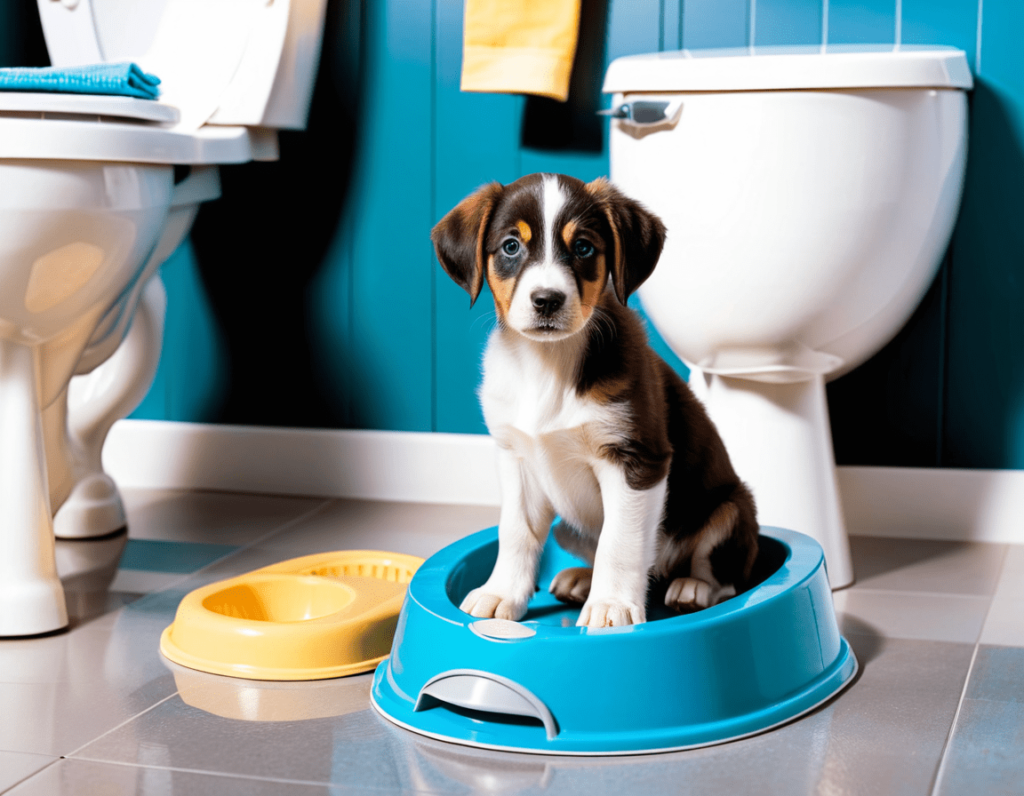
Step 7: Be Consistent and Patient—POTTY Training Takes Time!
Potty training doesn’t happen overnight, so stay consistent, and be patient. Some puppies pick it up within weeks, while others may take a few months to get fully house-trained. The key is to keep at it and avoid changing the routine.
The best part? Once your puppy finally “gets it,” all those early morning trips outside and occasional messes will be a distant memory. Plus, you’ll get the satisfaction of knowing you did it – you taught your pup to become a potty pro!
Additional Tips for Potty Training Success
Potty training is all about finding what works for both you and your pup. Here are a few more tricks that can help make the process smoother:
1. Set Alarms for Potty Breaks
If your puppy is young or you’re worried about forgetting, try setting alarms on your phone for regular potty breaks. This will keep you both on schedule, even when life gets busy. Puppies are more predictable when they’re on a consistent routine.
2. Try a Potty Command
Using a command like “Go potty” or “Do your business” can be helpful in letting your pup know it’s time to get down to business. Say the command each time they go, and they’ll start associating the phrase with doing their thing.
3. Keep Potty Trips Calm and Focused
Puppies get distracted easily (like, very easily), so keep potty trips quick and focused. Don’t encourage play until after they’ve done their business – otherwise, they might get the idea that potty breaks are just another playtime!
4. Watch Out for Regression
Sometimes, just when you think your puppy has it all figured out, they’ll have an accident or two out of the blue. This is common, so don’t panic! Stick to your routine and keep up with the positive reinforcement. They’re still learning, and with consistency, they’ll be back on track.
5. Celebrate Small Wins!
Potty training is a big milestone, so don’t forget to celebrate every little victory along the way. Each successful potty trip outside means you’re one step closer to a fully house-trained pup – and a lot less carpet cleaner in your future!
Wrapping Up: Potty Training is a Marathon, Not a Sprint
Remember, potty training is one of the first steps in teaching your puppy about the world, and it’s a skill they’ll carry with them for life. While it may feel challenging at first, every day is an opportunity for them to learn. Embrace the journey, the laughs, and even the occasional mishaps – because before you know it, your puppy will be a fully trained member of the family.
So keep up the routine, stay patient, and stock up on treats. You’ve got this, and so does your pup! 🐾
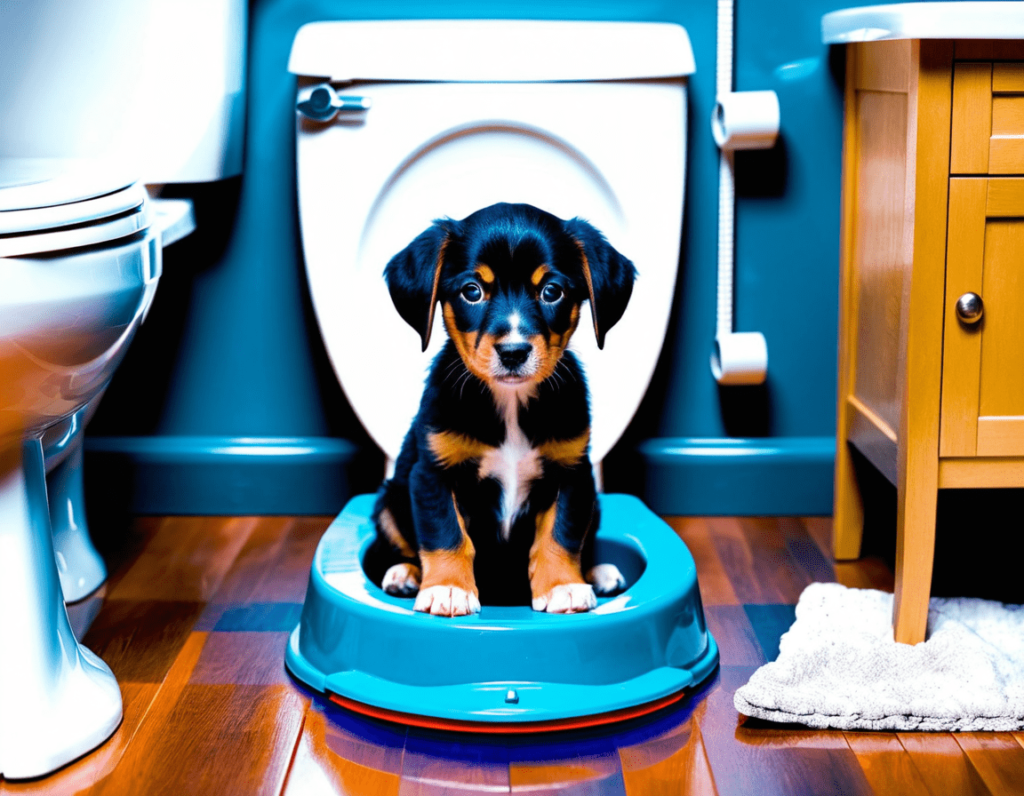
FAQs on Puppy Potty Training
How Long Does It Take to Potty Train a Puppy?
Answer: Every puppy is different, but with consistent training, most puppies can learn the basics in 4-6 months. Some may take a bit longer, especially smaller breeds that have smaller bladders.
What’s the Best Age to Start Potty Training?
Answer: It’s never too early! Most puppies can start potty training as early as 8 weeks old. The sooner you start, the better, as puppies learn best with a routine from day one.
Should I Use Puppy Pads for Potty Training?
Answer: Puppy pads can be a useful tool if you live in an apartment or can’t get outside easily. Just keep in mind that some puppies may get used to going indoors, so it might take a little extra time to transition to outdoor-only pottying.
What if My Puppy Keeps Having Accidents?
Answer: If your puppy keeps having accidents, try adjusting the routine and taking them outside more often. Remember, puppies have small bladders and may need frequent breaks. If you’re still having trouble, it might help to talk to a trainer for some additional tips.
Final Thoughts: You’ve Got This!
Potty training a puppy takes patience, consistency, and a sense of humor. There will be messes and frustrating moments, but stick with it! Soon enough, your puppy will be confidently doing their business outside, and you’ll have a clean, accident-free home. Just remember, puppies are like toddlers – they’re learning, and sometimes they’ll get it wrong before they get it right.
Enjoy the journey, and don’t forget the treats – for both you and your pup!

